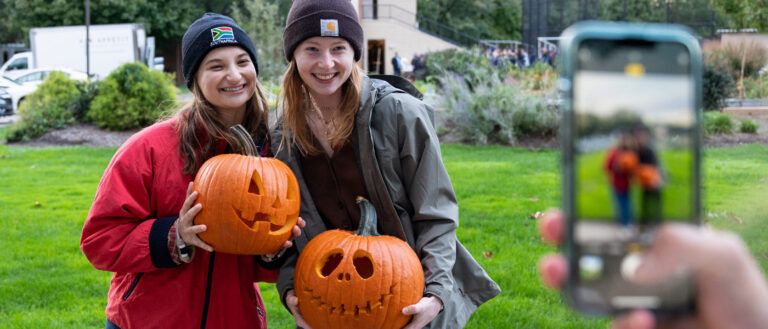The spooky season is upon us, and with it comes mounds of chocolate, horror movie marathons and imaginative costumes. But, where did some of these Halloween traditions even come from?
The Daily wanted answers—and found them through Timothy Beal, a Distinguished University Professor and the Florence Harkness Professor of Religion at Case Western Reserve University. In addition to scholarly articles, Beal has written essays on religion, media and culture for The New York Times, The Wall Street Journal and The Washington Post, to name a few.
Read on to discover three things Beal thinks you might not know about Halloween.
1. The name ‘Halloween’ comes from ‘All Hallows’ Eve.’
“Hallow” plus “e’en,” or “even,” short for “evening.” All Hallows’ Eve is the night before All Saints’ Day (aka All Hallows’ Day), a Catholic holiday honoring all the saints, known and unknown.
2. All Hallows’ Eve was a Christian appropriation of a Gaelic holiday, Samhain.
Most scholars believe that All Hallows’ Eve has its origins in the Roman Catholic church’s appropriation and Christianization of an earlier Gaelic holiday, Samhain, which was a fall harvest festival (pumpkins, anyone?). Celebrated by Indigenous peoples of Ireland and Scotland before Christianity arrived, Samhain was a time of liminality, or betweenness, marking the transition from the hot season to the cold season.
3. Samhain traditions can be seen in today’s Halloween celebrations.
The Gaelic people believed that Samhain was a time when the boundary between this world and the “Otherworld” was thinner, more permeable, so that spirits and the souls of the dead could enter this world and visit the living. To appease the visiting spirits, people would leave them offerings of food and drink. Sometimes, people would also dress as the dead and go house to house to receive such offerings. Sound familiar?
Learn more about the origins of Halloween, and have a safe and spooky holiday, Spartans!


